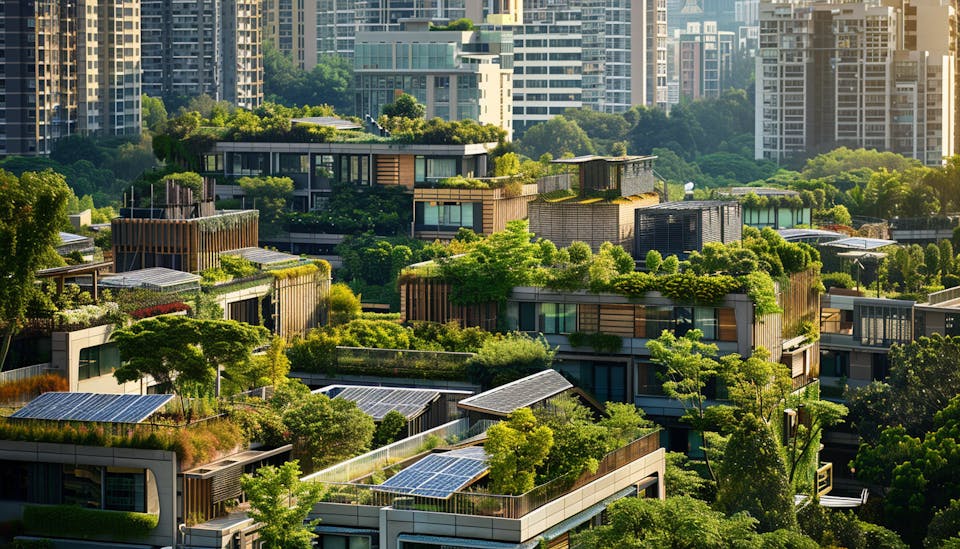Green Mobility in Residential Communities: A Step Toward Sustainable Urban Living

Introduction
As cities across Pakistan grow more congested and polluted, the conversation around sustainable urban mobility is becoming increasingly important. Transportation contributes significantly to air pollution and carbon emissions—two major challenges faced by urban centers today. In response, modern residential communities like Falaknaz Greens, One Beverly, and The Mega Mall are now incorporating green mobility solutions to support cleaner, healthier, and more sustainable lifestyles.
From bicycle lanes and electric vehicle (EV) charging stations to walkable infrastructure and shared transport, the shift toward eco-friendly commuting options is transforming how people live and move within urban environments.
What Is Green Mobility?
Green mobility refers to transportation systems and practices that:
Minimize environmental impact
Promote energy efficiency
Support public health
Reduce dependence on fossil fuels
It includes walking, cycling, public transit, EVs, and shared transport systems. In residential settings, green mobility enables residents to travel conveniently while reducing their carbon footprint.
The Problem with Traditional Urban Transport
Urban transportation in Pakistan is largely dependent on:
Fuel-based vehicles
Poorly maintained public transit
Lack of pedestrian-friendly infrastructure
Traffic congestion and air pollution
This contributes to:
Increased greenhouse gas emissions
Public health hazards
Noise pollution and mental stress
Reduced overall quality of life
The transition to green mobility in residential communities is a practical solution to these systemic challenges.
How Modern Communities Are Adopting Green Mobility
1. Bicycle-Friendly Infrastructure
At Falaknaz Greens, developers have prioritized:
Dedicated bicycle tracks
Secure bike parking areas
Community bike-sharing programs
Cycling not only reduces pollution but also promotes fitness and wellness. Residents are encouraged to use bicycles for short commutes within and around the community.
2. Pedestrian-First Design
Modern communities like One Beverly emphasize walkability by featuring:
Wide, shaded walkways
Barrier-free pedestrian paths
Minimal vehicle intrusion in internal zones
Walkable environments encourage low-emission travel and create safer, more interactive community spaces. They also contribute to a more active lifestyle for residents.
3. Electric Vehicle (EV) Integration
With EVs on the rise in Pakistan, developments like The Mega Mall are integrating:
EV charging stations in residential and visitor parking areas
Priority parking spots for electric and hybrid vehicles
Smart metering systems for electricity usage
By supporting EV infrastructure, developers promote the adoption of cleaner transportation alternatives.
4. Shuttle Services and Shared Transport
Many high-end communities now provide:
Internal shuttle services to key city hubs
App-based carpooling and van services
Partnerships with ride-sharing platforms for eco-friendly fleets
These services reduce traffic within the community and offer affordable, low-emission alternatives to residents.
5. Reduced Car Dependency
In addition to infrastructure, policies also matter. For instance:
Limiting the number of cars per unit
Encouraging public transit use
Offering incentives for EV owners
Falaknaz Greens and similar developments focus on community designs where owning multiple private vehicles is discouraged in favor of smart, shared, and green mobility options.
Benefits of Green Mobility in Residential Living
Implementing green mobility enhances:
Air quality and public health
Safety for children and elderly residents
Noise reduction and urban serenity
Property value and community appeal
Buyers increasingly prefer communities that offer mobility choices that are cleaner, healthier, and future-ready.
Resident Perspective: Embracing a Greener Commute
Residents can support green mobility by:
Choosing walking or cycling over short car rides
Using community shuttle or carpool services
Opting for electric vehicles
Advocating for better infrastructure and mobility access
Every individual choice adds up to a collective impact, creating healthier and more sustainable neighborhoods.
Challenges to Green Mobility in Pakistan
While the benefits are clear, some obstacles remain:
Limited access to affordable EVs
Lack of awareness and education
Resistance to changing commuting habits
Weak enforcement of traffic and emissions laws
However, as early adopters like One Beverly and The Mega Mall showcase success, more communities will follow their lead.
Government and Policy Support
To encourage widespread adoption, governments should:
Provide subsidies for EV infrastructure
Develop bike lanes and public transport networks
Implement vehicle emissions regulations
Promote green mobility through city master plans
Partnerships between developers, municipalities, and private players are essential to scale these efforts.
Final Thoughts
Green mobility isn’t just a solution to traffic—it’s a key pillar of sustainable urban living. As modern developments like Falaknaz Greens, One Beverly, and The Mega Mall embrace eco-friendly commuting systems, they’re not only reducing environmental harm but also creating communities that prioritize health, wellness, and quality of life.
By rethinking how we move through our cities, we’re also redefining what it means to live well.


